Shibanxi 2012
(not just Shibanxi this time
but other Sichuan and Chongqing lines as well)
28 February 2012 - 22 March 2012 (ongoing)
last updated: 7 March
I've added a page of railway architecture photos which may be of interest to modellers and those who aren't just interested in locomotive shots. (added 5 March)
I have added a new page for our visit to Shibanxi (7 March)
There is also a page documenting the visual changes at Shibanxi in the last 12 months. (7 March)
The Pre-Tour
I'll post reports here of our visits to Mianzhu, Hanwan, Jianghe, Yongchuan, Guangshunchang, and Mojiang. Along the way, we expect to see working standard gauge SY along with various ng diesels and electrics. Shibanxi has its own page (started 7 March).
1 March
A good start, 2 plinthed locos within one hour of leaving the airport and one loco in steam, one in reserve within 2 hours.
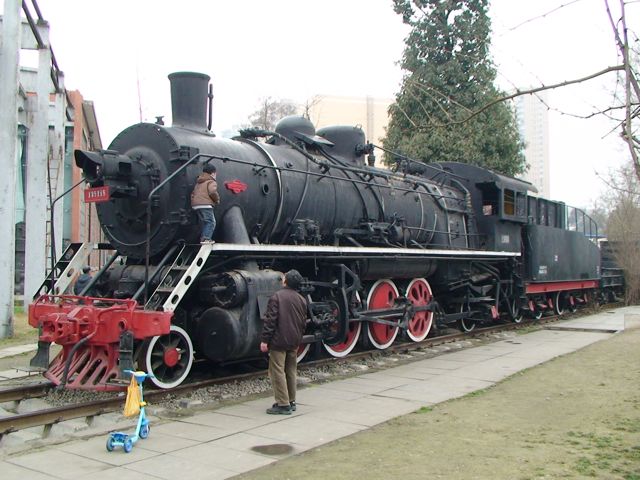
Plinthed SY at former industrial site off the 2nd ringroad in south east Chengdu now being turned into a park, photography museum and concert hall named Chengdu East Music Park. Google locates this http://g.co/maps/nm688
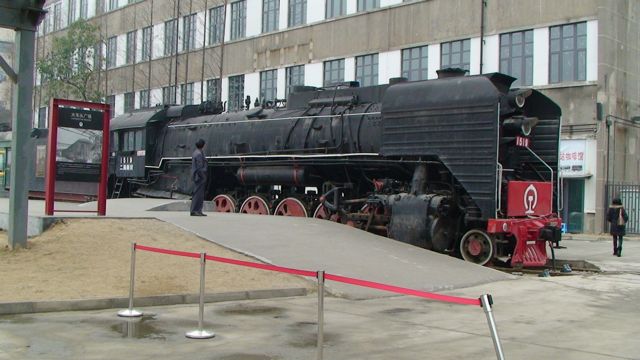
Plinthed QJ 1519 around the corner from the top picture.
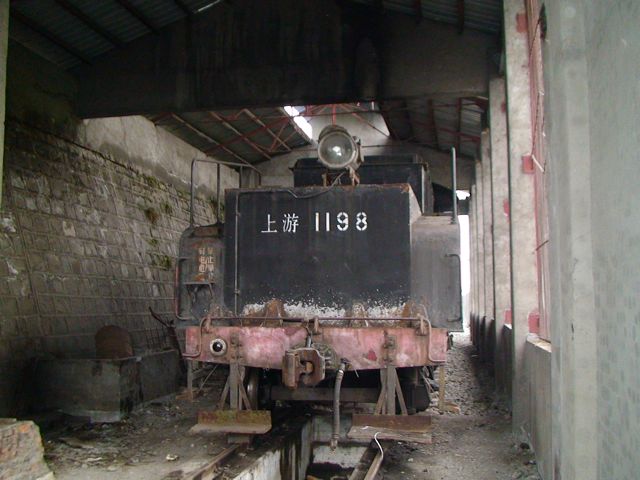
Reserve loco in the shed at Mianzhu Sulphuric Acid plant
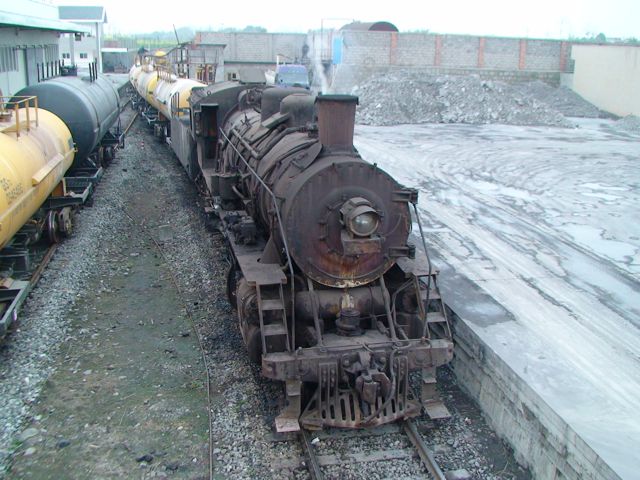
Working loco SY 1656 at the Sulphuric Acid plant
2 March - Mianzhu and Hanwan industrial lines
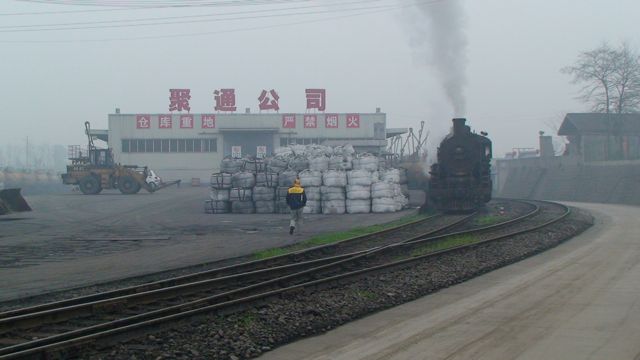
Taken more to identify the location (Ju Tong Gong Si - transportation company working with the Mianzhu Da Qu Chinese Liquor company). Mianzhu SY 1656 waits to shunt tanker wagons of acid.

SY 1656 at the headshunt with China Rail. The tanker wagons need to be shuffled around to be filled.
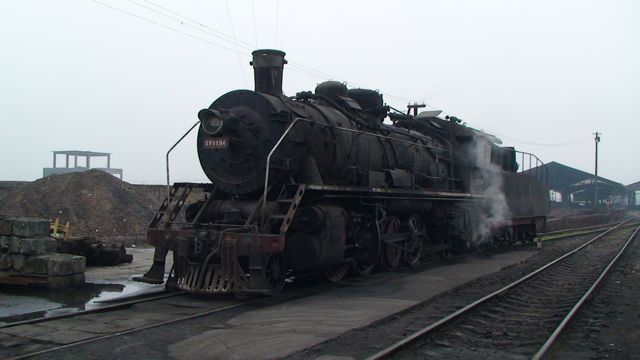
The working loco at Hanwan SY 1194. There is coal to be moved from China Rail Monday to Thursday. We arrived on a Friday!
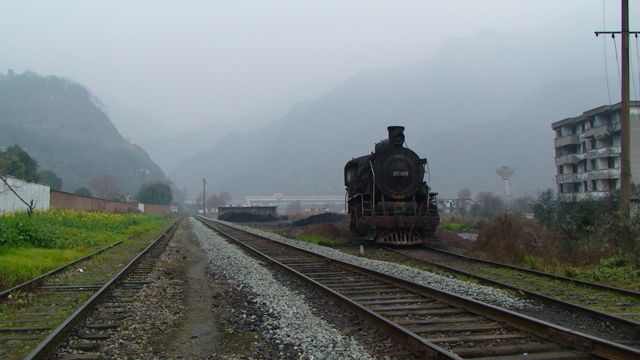
The spare loco up at China Rail SY 0418 (built Tangshan July 1970). The buildings on the right and behind have yet to be demolished after a major earthquake in December 2008. I'll put more earthquake pictures on my page http://linesiding.blogspot.com/ They are not up yet and I suspect that I won't be able to access Blogspot until after I leave China. The Great Firewall of China is still working!
3 March - Jianghe Coal Railway (610 mm), north of Chongqing
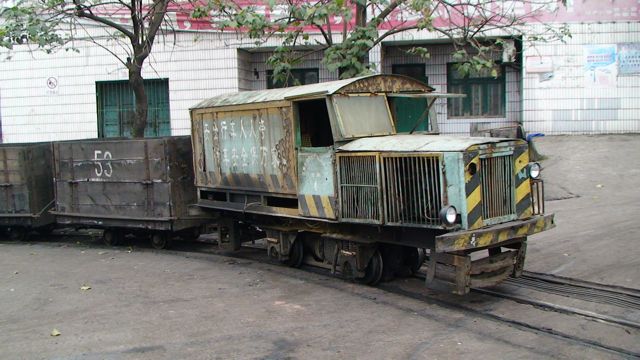
Around 8 am on the turning circle at 302 Coking Plant. The plant is closed but coal is still moved from the mine to the river by these unusual belt-drive diesel locos.

The trains operate in convoys 3 times a day departing the mine at 7, 10 and 14:00. There are currently 5 trains in a convoy, each consisting of 8 wagons. The lower section of the line is losing its scenic character and major construction is visible on the right.
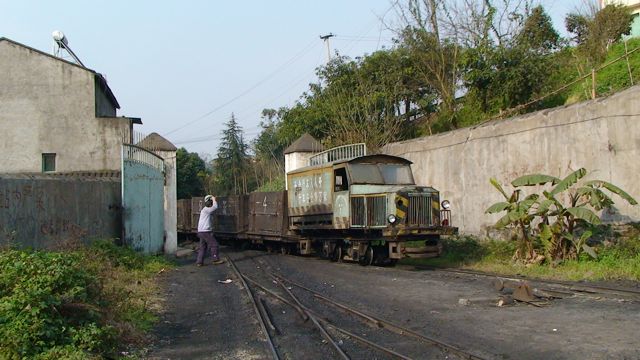
A train of empties entering the loading compound at the mine in a rare burst of sunshine.

The depot and works is on a spur close to the mine. Once the tracks went on to another mine further up the valley. This scene seemed littled changed from 12 years ago when I first came here.
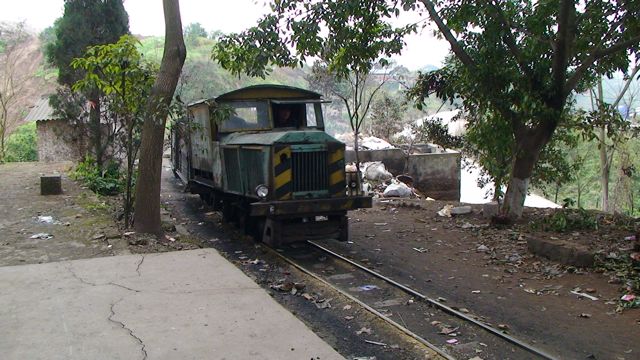
Approaching the summit village. Here as well, the urban blight is encroaching.
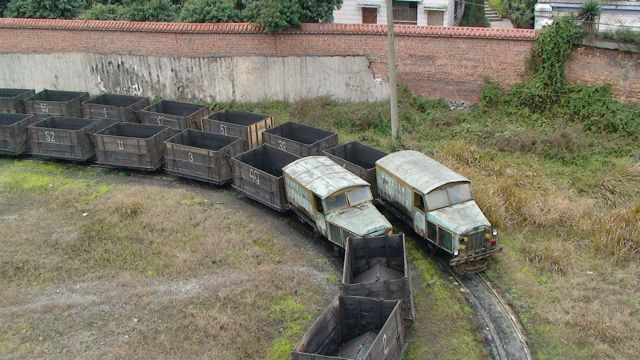
View from the tippler level of one train parked up and the other heading for the coal hopper to load up. This is another turning circle.

Looking down on the coal hopper.
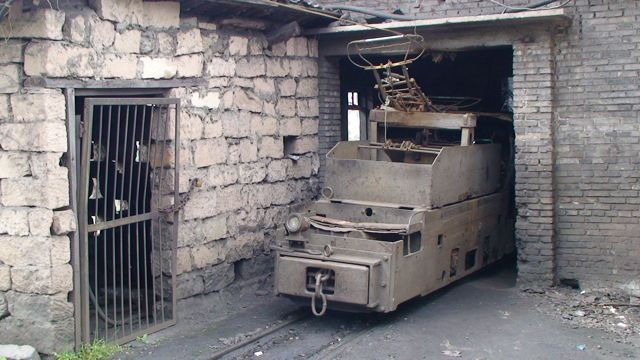
The tippler level - the mine has two of these electrics (one in reserve) which bring the coal from the mine to the bins for loading the diesel trains. The line emerges from a longish straight tunnel with the mine on the other side. We didn't explore the other side.
The future of the line is uncertain. There may be dreams of a future tourist operation but by that time the Chongqing urban sprawl will have destroyed most of the character of the line. Staff are currently friendly and access to all areas was possible.
There is now an expressway from the airport heading west which has an exit close to the line. The same expressway connects to another to Chengdu.
4 March - Honglu Coal Railway near Yongchuan 762mm gauge (around 2ft 6in)
The junction of this line with China Rail can be accessed by 505 bus from Yongchuan. Currently a bridge is closed to 4 -wheel vehicles after the railway junction, so onward travel to Honlu is on foot across this bridge and at the road junction catch a bus onwards (or on the back of a motorcycle taxi as I did on my first visit).
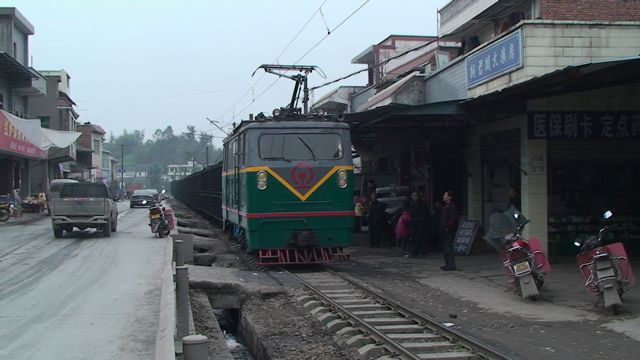
Loco No. 2 passing through Old Honglu with a coal load for the transhipment point

Approaching the transhipment point with China Rail
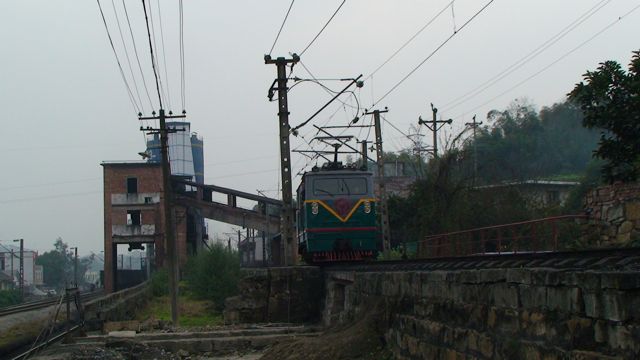
At the transhipment point
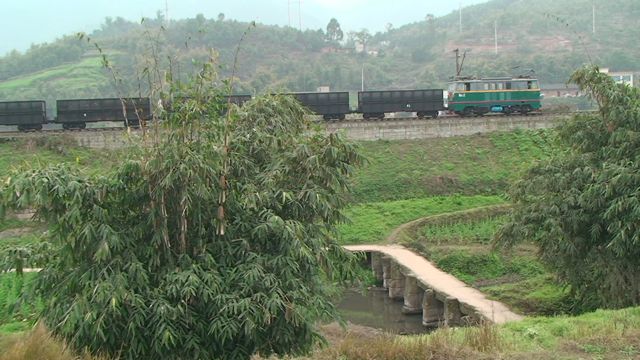
Train of empties returning to Honglu
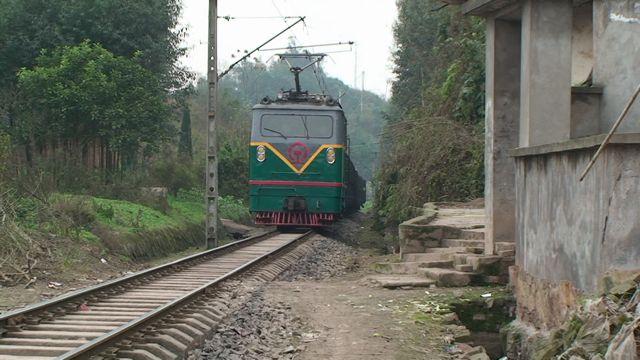
Last train of empties returning to Honglu around 3 pm
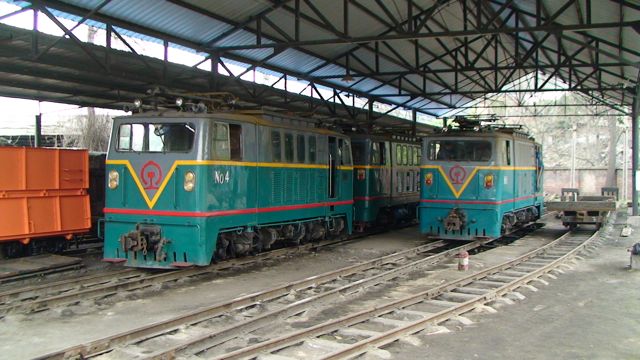
Honglu shed with No. 4, 3 and 5 on shed. No. 2 was working the last train and No. 1 was under repair in the workshop. The line is worked in two sections, transhipment point to Honglu (2 locos No. 2 and 4 in use on trains), Honglu to the coal mines further up (No. 5 in use). No. 3 was yard shunter at Honglu.
5 March - Honglu and Guangshunchang
Today was primarily a transfer day from Yongchuan to Shawan but we drove past the Honglu electric line on the way to Guangshuchang and caught a coal train getting ready to depart Liujin (6th mine) for Honglu washery.
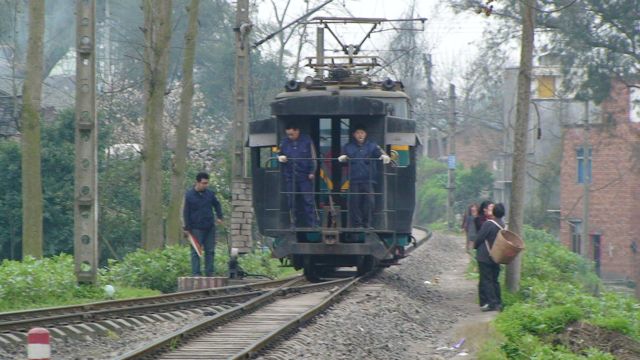
The caboose was put on the rear of the train

Loco about to run round to the front of the train to complete the loading process
We then drove on to Guangshunchang and had a brief look at the mine electrics before being ejected by the mine policeman. This location has become sensitive, possibly due to local protest on their doorstep over the demolition of apartments.
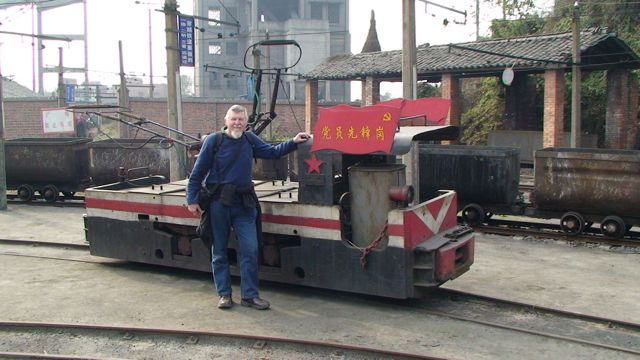
This is the first decorated narrow gauge mine electric I can remember seeing (Dang Yuan Shian Feng Gang - recognising the pioneer communist party member who is the driver of this loco)
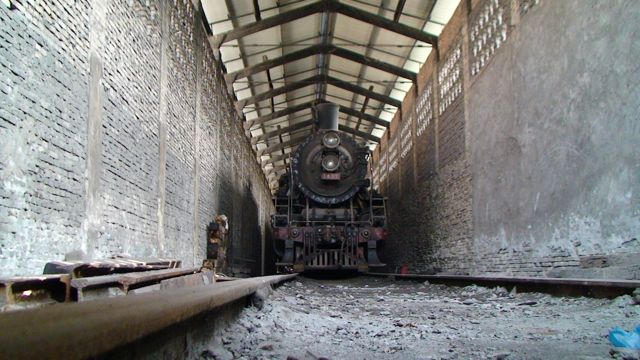
In a shed on the standard gauge mine railway is SY 1492 (see under the locked door). There could be another locos behind it in this long shed. When I was here last in 2008, one SY was still in use on line work but dieselization came shortly after.
We then drove via expressways via Yibin to Leshan and by local road to Shawan.
6 March - Mojiang Coal Railway
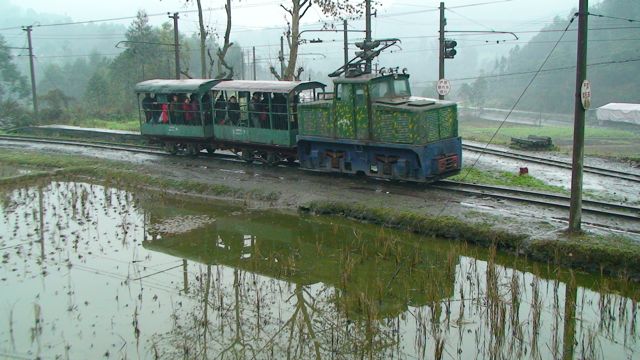
Our first train of the day was a return working off the long line. The steeple cab locos haul the passenger and caol trains.
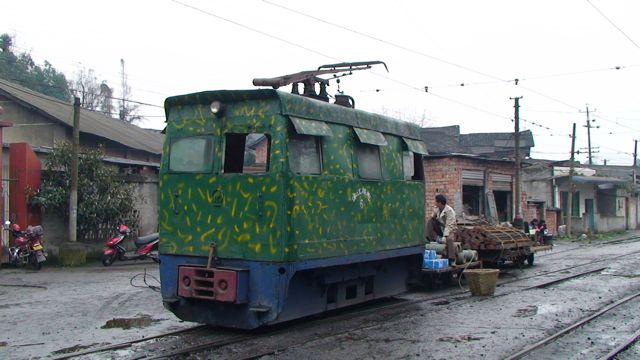
There are two of these box-cab electrics for service trains of materials for the mines (oxygen cylinders, pit props, bricks or concrete blocks for mine tunnels support, etc.) and for permanent way trains.
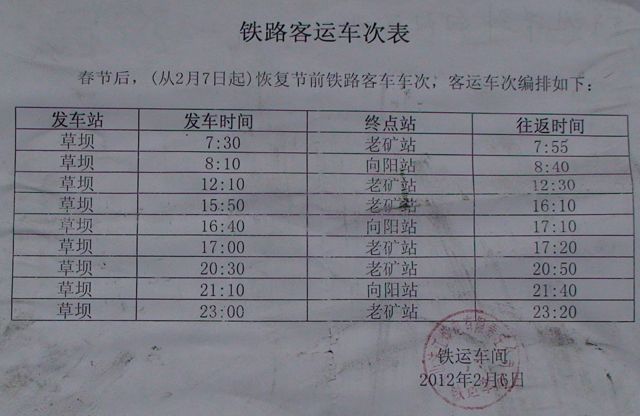
The current timetable. In the 3rd column, the commonest destination (7:30, 12:10, etc.) is the short line. The timetable shows 6 return trains on the short line and 3 on the long line.
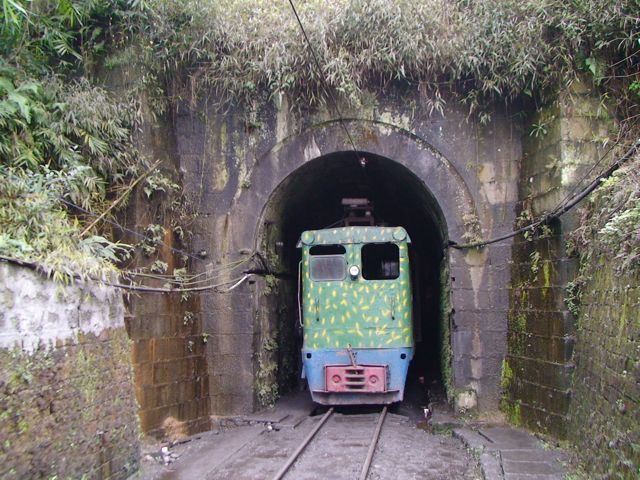
One of the box-cab locos on a pw train working on the tunnel roof at 14:30. With the line closed to regular trains, we left for Shibanxi.
The system is much friendlier and riding trains is again possible for a negotiated 'tourist price' - 10 yuan is probably normal where the locals pay 1 yuan. However, we did run into one unpleasant character who didn't want us to take photos at Xiangyang.
This report continues on a new page for Shibanxi.